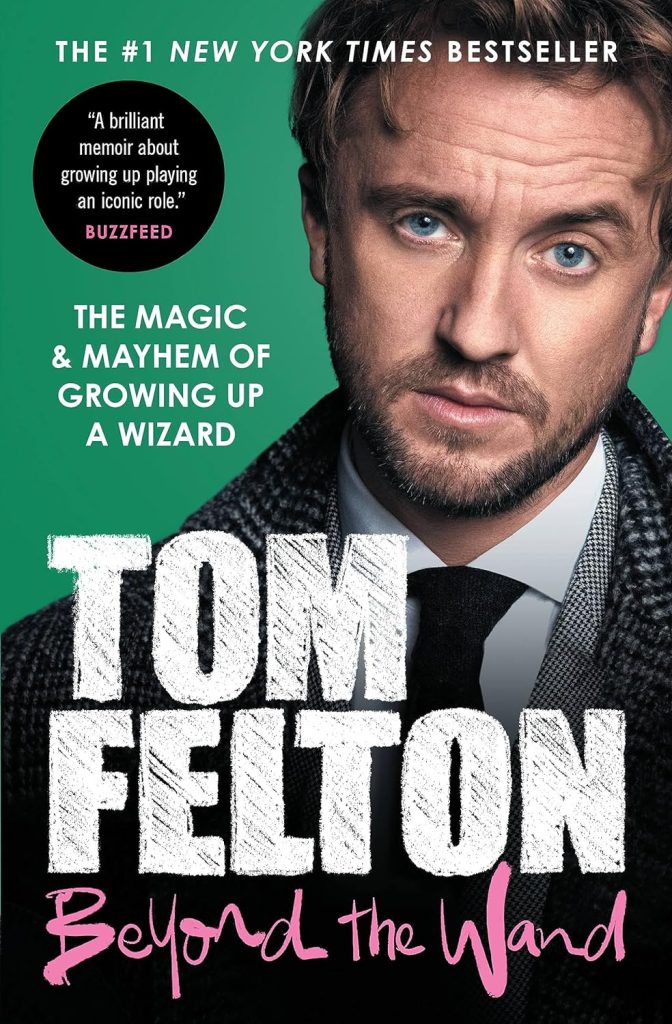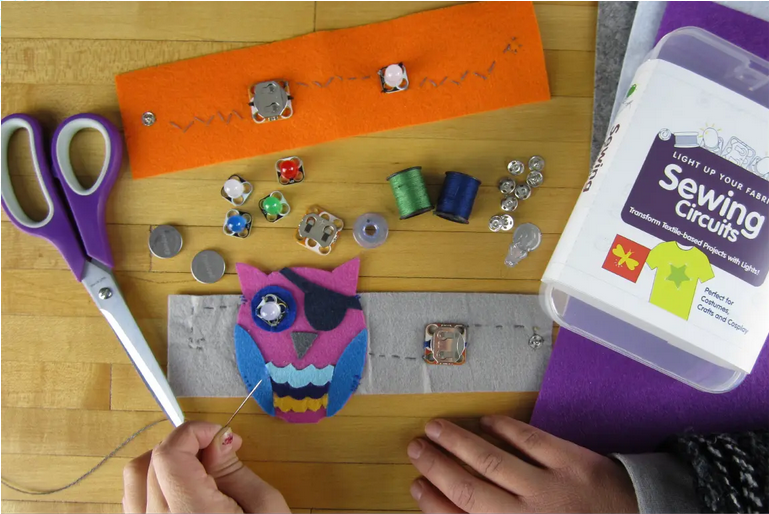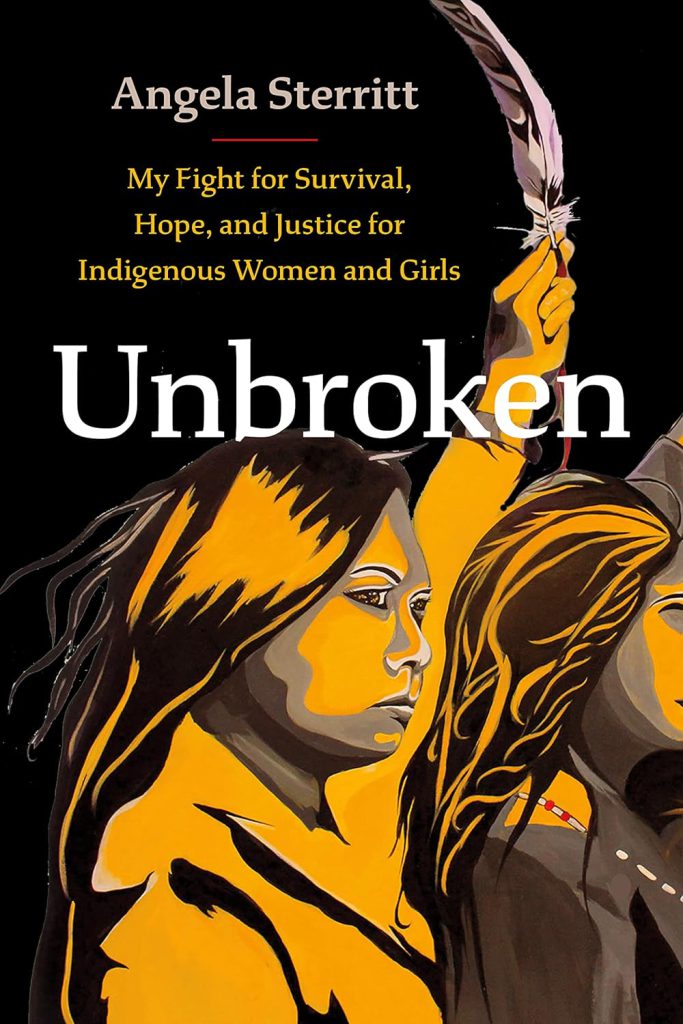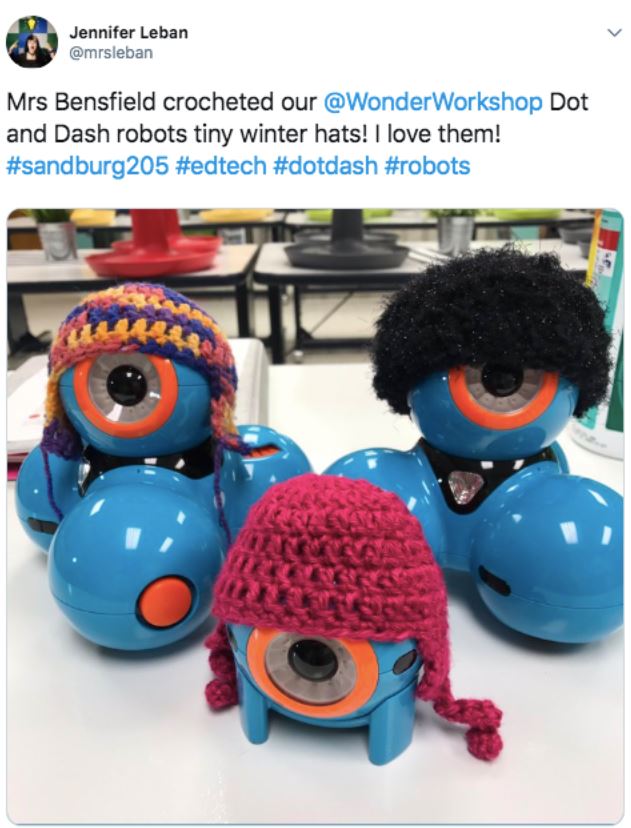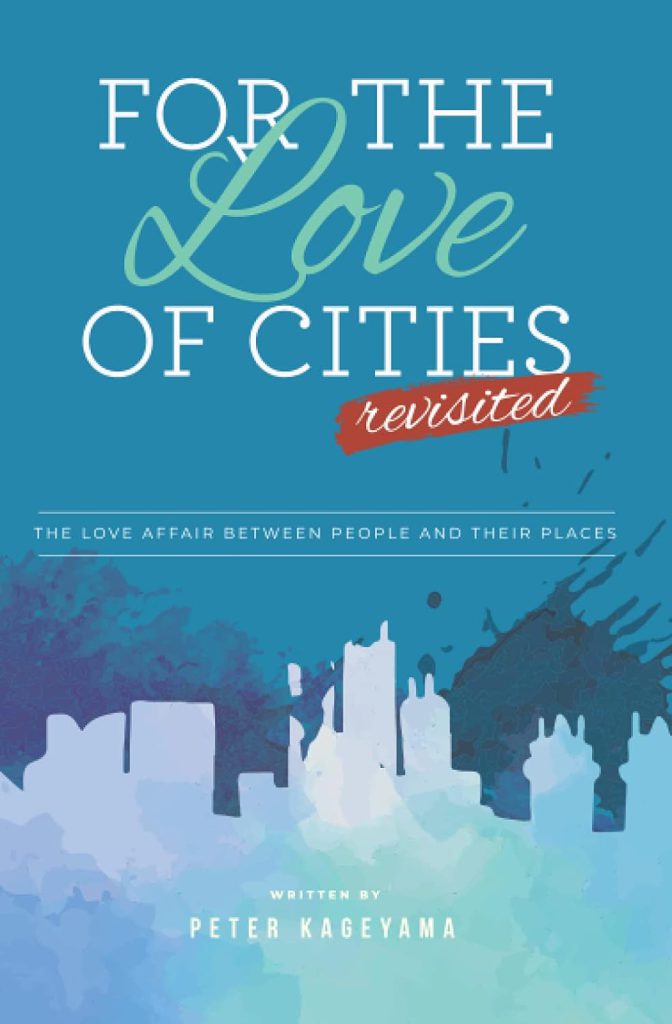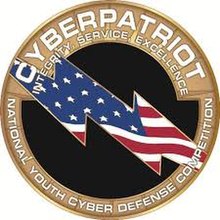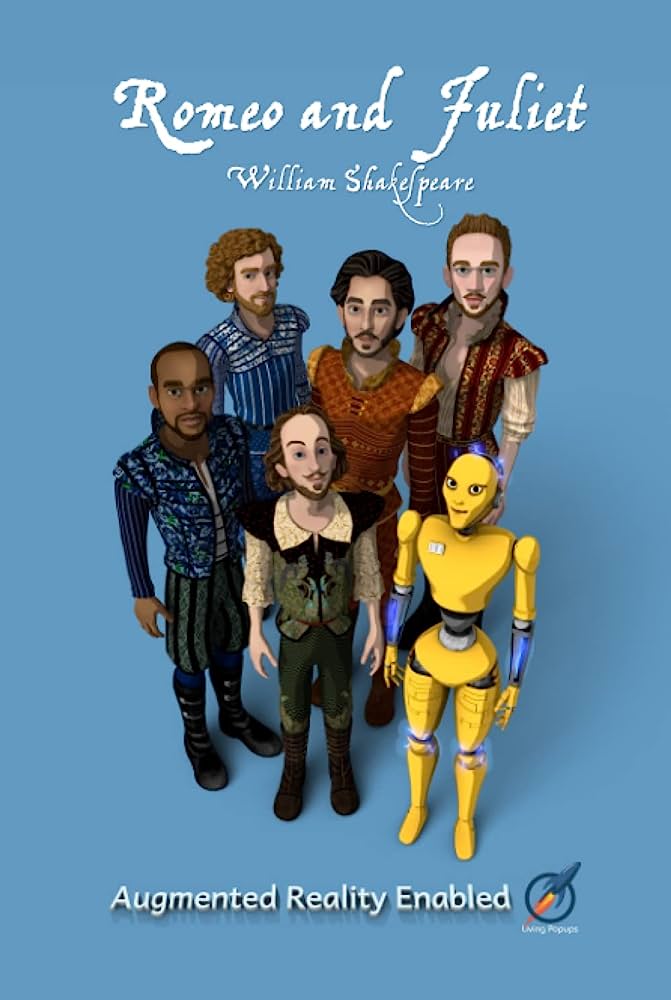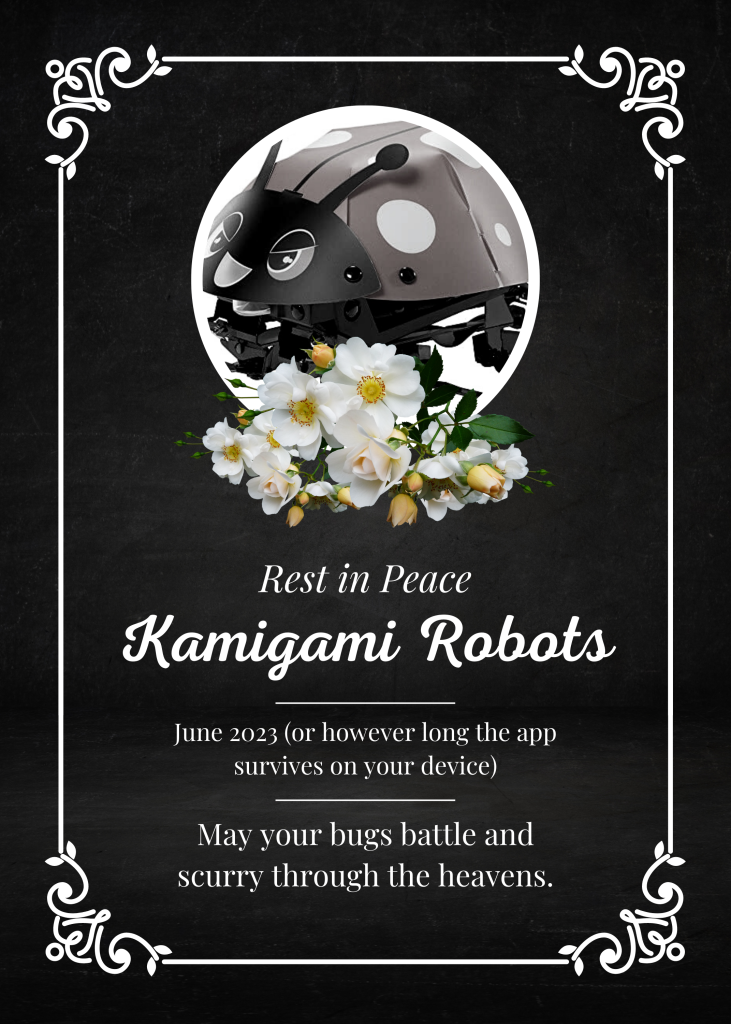Search the Blog
Categories
- Books & Reading
- Broadband Buzz
- Census
- Education & Training
- Friday Reads
- General
- Grants
- Information Resources
- Library Management
- Nebraska Center for the Book
- Nebraska Libraries on the Web
- Nebraska Memories
- Now hiring @ your library
- Preservation
- Pretty Sweet Tech
- Programming
- Public Library Boards of Trustees
- Public Relations
- Talking Book & Braille Service (TBBS)
- Technology
- Uncategorized
- What's Up Doc / Govdocs
- Youth Services
Archives
Subscribe
Author Archives: Amanda Sweet
LibChalk Web Hosting for Libraries
I’ve gotten a lot of questions about web hosting options for libraries recently. Many of you use Nebraska Libraries on the Web, the free WordPress hosting offered by the Nebraska Library Commission. That’s delightful, and I’m all for it! I may be slightly biased there. You know why.
But hosting through us does have a few limitations for customization and feature options. So I like to keep options open for libraries who want a little more customization or control over their website feature choices.
This particular post is about LibChalk, a web hosting service designed by and for librarians and academic institutions that’s been around for about 30 years. The pricing is pretty reasonable with a basic site at $25/month. There are other pricing plans available. They can get you set up with a WordPress installation and access to some premium templates to make setup fast and easy.
They also help with site migration if you’ve already got a website up and running somewhere else and want to switch over smoothly. Since they do work with all flavors of education, they can also help you set up a learning platform on your site. If you’re so inclined.
So far they’re the only hosting service I’ve come across that is built by librarians for librarians, so that was cool too. Check out Libchalk’s website, or email Brian Pichman bpichman@evolveproject.org for more info, or to get set up.
If Brian’s name sounds familiar I’m not surprised. He’s been on a library circuit at conferences, webinars, Bywater Solutions, and elsewhere for a while now. I’ve known him for a while too, which is how I found out about LibChalk. I was surprised I hadn’t heard of it sooner, so I’m sharing it with you all now as well.
Friday Reads: Startup Communities by Brad Feld
Everyone has their thing they completely nerd out over. For me, that’s ecosystem building. Ecosystems are how people come together to solve problems and drive change in the world. I’ve dug into problem-solving ecosystems, innovation ecosystems, tech ecosystems, startup ecosystems, and how each of these ecosystems overlap and work together in different ways.
Today’s Friday Reads is all about how businesses, universities, colleges, nonprofits, government agencies, and libraries come together to cultivate and support entrepreneurs along a difficult journey. The fun fact is that libraries are not featured very heavily in the book, but we do play a role. Makerspaces, innovation spaces, entrepreneurial resource referrals, guest speakers, workshops, meeting spaces, and so many other ways.
This book helped me better understand how the ecosystem works overall. It could help you too. When libraries understand the process aspiring entrepreneurs take to launch a startup business, and can identify partner organizations within the entrepreneurial ecosystem, it’s easier to identify unmet needs where the library can help. This increases the value of the library to the business community, and adds new grant and funding opportunities.
I read this book many moons ago, but I still revisit it to refresh myself and spark new ideas. If you’re looking for new ways to engage with your community, especially in the world of workforce development, give Startup Communities a read. Let me know if you want to nerd out with me about ecosystems when you’re done. I have some stuff for you.
P.S. I try not to inflict my niche interests on the wider world too much, but this week, I let my nerd flag fly! Join me.
Tech Kits Through the Mail: Marty the Robot!
- Multiple coding options:
- Code-free
- Drag-and-drop block coding
- Text-based coding options
- Pre-made lesson plans. Some crowd favorites include:
- Dancing
- Kick a ball
- Change facial expression
- Find all lessons in Learning Portal
How to Use Tech Kits Through the Mail
If you haven’t used the Tech Kits Through the Mail service yet, it’s pretty easy:
- Fill out request form (up to 15 copies of each kit available)
- Receive kit(s) through the mail, or pick up locally
- 30-day loan period
- Mail kits back to Commission
- You only pay return shipping
- Some library systems offer assistance with return mailing- email your system director!
See the Tech Kit Lending Agreement for full policy details
Posted in Pretty Sweet Tech, Programming, Technology
Leave a comment
Pretty Sweet Tech: New Dash Robot Winter Activities!!
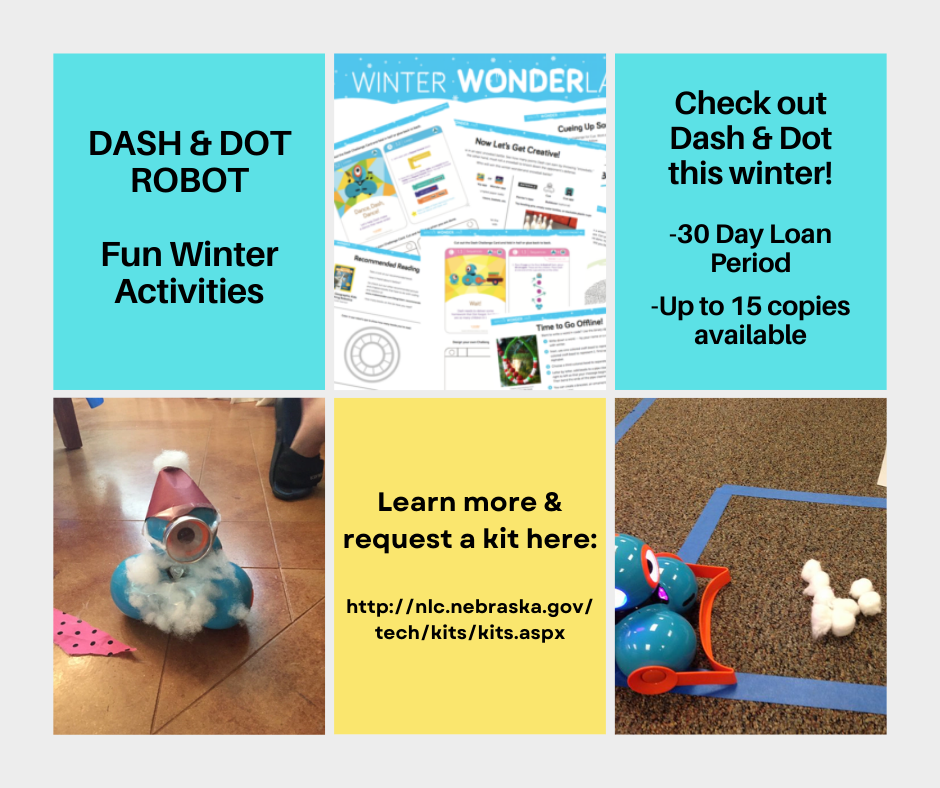
Wonder Workshop sent out this fun new collection of Winter-themed activities for Dash Robot! If your library already has Dash, download the worksheets, or use these activity images as inspiration for your next round of activities!
Check out some kits from us: Through the Nebraska Library Commission’ Tech Kits Through the Mail service, you can check out between 1 and 15 copies of Dash & Dot Activity Pack (includes launcher & xylophone!). All you pay is return shipping. We’ve got everything else covered.
Reserve yours ASAP, before they’re all reserved for the season: http://nlc.nebraska.gov/tech/kits/kits.aspx
(There are other kits available, so give them a try too!)
Posted in Pretty Sweet Tech, Technology, Youth Services
Leave a comment
WordPress Plugin Update: Weather Widget
To all the Nebraska Libraries on the Web users, I had to remove the weather widget because it was no longer being updated. But fear not! There is another way to add a weather widget to your site without a separate plugin.
The easy way for you is to just email me at amanda.sweet@nebraska.gov and ask me to add a weather widget to your site, along with the location where you would like the widget added. For example: can you add a weather widget on the home page on the right side, near the top?
Alternatively, you can follow these steps:
- Go to this website: https://weatherwidget.io/
- Type your location in the “Select Location” area.
- Change Units to Fahrenheit
- (Optional) Change the size of the widget by clicking and dragging the border. The pixel size will appear on the right side so you know what size it is.
- Average side bar size is 300px.
- Average full-width top banner size is 1200px
- (Optional) Click on Options across the top and change the number of days in the preview.
- Click “Get Code”. Copy to clipboard.
- Login to WordPress and go to the section where you want the widget to appear.
- Go to WP Code Block and add a code snippet. Paste everything in the <script> tags. Make sure you choose “Javascript as a language type.
- Copy everything in the <a class></a> tags.
- Go to the page/ section where you want the widget to appear.
- Add an HTML block and paste what you copied in Step 9.
- Add a WPCode block and choose the name of the snippet you created in step 8.
- The widget should appear. If it doesn’t show on the screen, Publish the changes and check if the widget shows up on the actual website.
Again, if all else fails, just email me and I’ll get it added.
Posted in Nebraska Libraries on the Web, Technology
Tagged Nebraska Libraries on the Web, Website
Leave a comment
Friday Reads: Thinking in Systems by Donella Meadows
Last night I went to a Community Building workshop on affordable housing here in Lincoln. To be clear, I personally have affordable, well-maintained housing. My landlord is cool. He fixes stuff. But apparently that’s not so true in the Near South Neighborhood. Probably other neighborhoods too.
I heard about code violations, landlord retaliation, rising housing costs, and mold aplenty. So very much mold. Everyone in that room knew about the problem, but was looking for a solution. That’s where Thinking in Systems by Donella Meadows comes into play.
That was the first comprehensive book I read about systems thinking. In a nutshell it says what we all know to be true: one things affects another, which affects another in a big, messy cycle. In this case, housing structures are designed and built decades ago. Funding is raised for building and construction, but all houses need repair eventually. The landlords who own the units do not always have funding for costly repairs, like extensive mold damage or updated plumbing. Some just plain don’t seem to care. I could go on. It’s just turtles all the way down.
Thinking in Systems talks about how to bring some order to the chaos. I read this book many moons ago, but it was one of the things that inspired me to make this Affordable Housing Map that shows what it takes to tackle the problem statewide. View it on a desktop. Maybe a tablet. It’s too big to see on a smartphone.
The map is one way to visualize a system, but that gets paired with root cause analysis to dig deep and make sure efforts are addressing the right problem. Finding new and different ways to bring people together to share ideas, innovate and collaborate are good tools too , among others.
All in all, it turns out I like to think in systems. Who knew? I’m a systems nerd! Give this book a read if you want to find out what it takes to solve the big, messy problems of the world.
Free Virtual Conference on AI in Libraries!
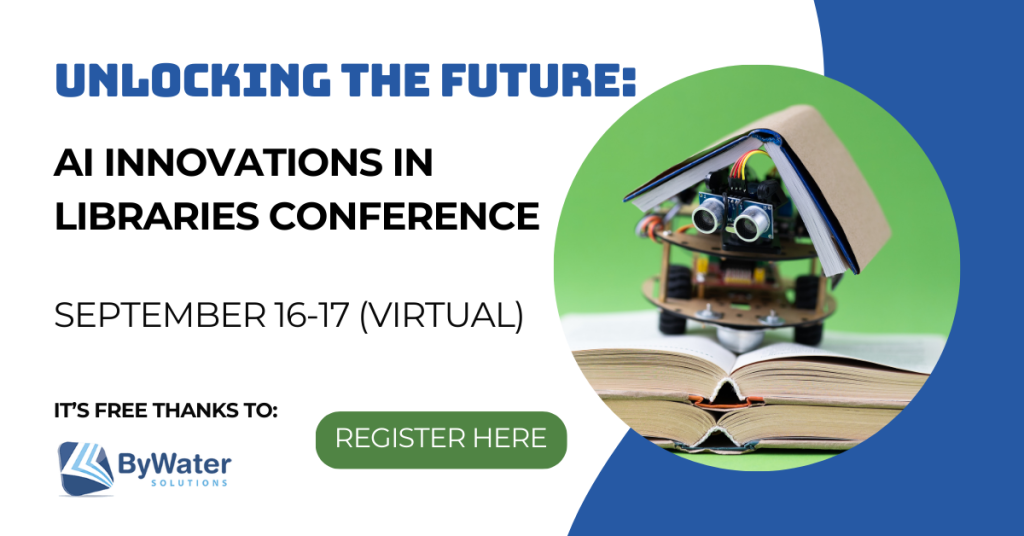
You know I’m always on the look-out for new and interesting AI conferences. On September 16-17, Brian Pichman with Bywater Solutions will be hosting the free Unlocking the Future: AI Innovations in Libraries conference. I’ve worked with Brian on a whole mess of projects, so I can confirm he knows his stuff about all things AI, education, and libraries. Bywater also brought in a bunch of speakers with their own expertise and awesomeness.
What Will You Find at the Conference?
You will find all kinds of fun sessions, including:
- AI Literacy: What do we really need to know about AI to prepare our communities for a better future?
- AI for Kids: How can we help K-12 students build AI literacy?
- Generative AI: What is all this about AI generating images, stories, responses, etc? What does this mean for public libraries?
- Library Marketing: How can generative AI improve our own library marketing?
- AI for Reference and Training: How can libraries improve services, rather than fall behind?
Naturally, I registered already. Was there really any question?
How to Register
You can find conference info. & register at this link.
Did I mention it’s free? Bywater Solutions rocks!
Spread the Word!
Feel free to spread the word to all your library folks. We need more libraries talking proactively about all things AI! This conference is a good start. We might need a new library interest group soon…
Visit the Tech Playground @ALA
If you’re going to ALA in San Diego this week, visit our Tech Innovation Librarian, Amanda Sweet at the Tech Test Pilot Playground in the Exhibit area. Get some hands-on exploration to test out robots, AI, and all that techy goodness. This is a collaboration between Amanda and Brian Pichman from the Evolve Project. It’s time to play!
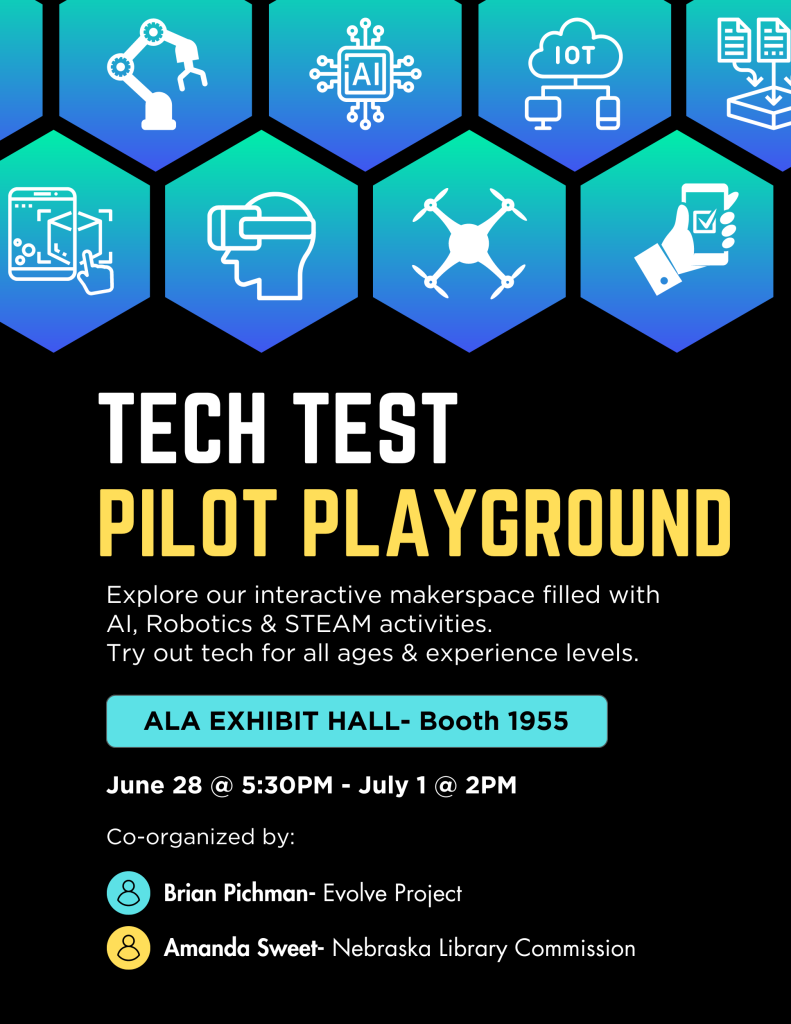
Friday Reads: Beyond the Wand by Tom Felton
Malfoy. The name alone sparks hatred among the Harry Potter community. Unless you’re a Slytherin. Then I guess it strikes hero worship. Maybe envy? In the Harry Potter movies, Tom Felton embodied this boy-bully wizard character with his whole shriveled up heart and blackened soul. The smallest, well-timed facial expressions almost made me feel sorry for a darkened boy wizard, shaped by a domineering father. Tom Felton never appeared on screen. Only Malfoy.
Then Tom Felton wrote a memoir. I almost didn’t read Beyond the Wand: The Magic and Mayhem of Growing Up a Wizard because I love to hate Malfoy so much. I didn’t want to watch the movies and know the mix of pain and triumph behind the scenes. I didn’t want to be yanked out of my carefully crafted fantasy land by looking at the man behind the wizard. But I decided to stir that cauldron anyway.
Now I wonder if Felton would have made the same life choices if he had known he would likely hear wizard puns until he was old and gray. Probably. There are worse ways to go down in history. He has plenty of wizard puns himself. I had seen him on the Graham Norton Show and other chat shows with the stars, but his memoir made him more real than any TV show. In my mind he was still a teenager, but he’s actually 36, a year older than me. I know actors age beyond their movies, but I never realized he was so close to my own age all these years.
The collision of fantasy and reality felt unnatural. There’s a reason I never want to meet the actor. They’re never like the characters you know and love. Or hate. It took about four or five chapters for me to see Tom instead of Malfoy. I know I’m not the only one with this problem because Tom still gets death glares from Gryffindors on a regular basis. Even when he tried to go back to his regular school life in between filming movies. The Muggle is real. Ahem. Struggle.
When he’s just Tom, it’s fascinating to learn how he sees the wonderful world of Harry Potter as a tool to bring people together. He believes in unity and shared purpose, just like his co-star Emma Watson. Off screen, he is a whole person who struggles with depression and figuring out who he is and what’s next in life. Regardless of common human struggles, Tom’s overall outlook on life and the world is something everyone should aspire towards.
Long story short, I’m glad I lifted the curtain and saw the man behind the wizard. Incredible things can happen when you decide to stir the cauldron.
Felton, Tom. Beyond the Wand: The Magic and Mayhem of Growing up a Wizard. Grand Central Publishing, 2022.
Make ‘n’ Take Circuit Kits: Brown Dog Gadgets
I know summer reading is taking the world by storm right now, but kids still want some circuit goodness even during the summer! If you’re looking for some quick and easy projects you can do right out of the box, try the circuit kits from Brown Dog Gadgets!
Their Sewing Circuits, Micro:bit rover kits, Solar kits, Origami Circuits, and a lot more are a level above the other kits I’ve tried. Here’s why:
- Excellent instructions
- Well packaged for individual or large group use, depending on the kind you buy
- High-quality parts that actually work
- Easy online ordering & tracking
- Try before you buy- order a sample pack
- Nylon conductive tape is safer and easier to use
- Crazy Circuits system is better for little fingers
Nylon Conductive Tape: For those who have used circuit kits before, I want to clarify those last two items. Traditionally conductive tape is metal and can be pretty sharp. I’ve walked away with far too many cuts on my fingertips after the old paper circuits. Brown Dog uses nylon conductive tape that feels like fabric. It’s durable, but can be repositioned on your project without losing stickiness. They sell their tape separately, so even if you have a bunch of paper circuit supplies already, it’s worth it just to gleefully throw out your old, metal, finger-hating, conductive tape.
Crazy Circuits: Their Crazy Circuits components make it easier to grip and work with LED lights and other small components. Traditionally, LED lights have two small wires and you have to figure out which side is the positive side, and which is the negative side, then make sure the tape makes contact with the right side. Crazy Circuits components are connected to a little circuit board and are easy to grip. So you can tape directly to the board, or use their conductive thread to build a circuit. The large holes also work with Lego bricks so you can make more cool creations.
Pre-packaged kits or individual components: Brown Dog’s pre-packaged kits are great for Code Clubs, make ‘n’ take kits to send home, makerspace activities, or anything your librarian heart desires. Some of their kits use their custom Crazy Circuits system, others use regular LEDs and traditional components. So you have your choice.
Check out Brown Dog Gadgets for quick and easy projects you can order online. They’re geared more towards K-8, but who doesn’t love to sew felt creations that can actually light up with joy? Stock up and pull them out on a rainy day.
Posted in Pretty Sweet Tech, Programming, Technology
1 Comment
Computers in Libraries 2024 (March 12- March 14)
I do an overview session of the Computers in Libraries (CIL) conference every year on NCompass Live sharing all the latest trends, tools, and techy tips. This year I remembered to tell you about the conference ahead of time! If you’re wondering, CIL is a magical time of year where libraries come together to talk about all things technology.
This year (March 12-14) there are tons of sessions on AI in the library, website re-design, next-level makerspaces, building knowledge hubs, cybersecurity, creative partnerships, tech for marketing, innovation spaces, and everything your techy little heart desires. It’s my happy place. I’ll also be doing two sessions and a workshop if you’re interested.
The Nebraska Library Commission offers discounted rates for CIL registration. If it’s not in the cards for you this year, tune into my NCompass overview session on April 24, 2024. Or do both, it’s hard to catch everything.
Learn more about the Computers in Libraries Conference, or register on their website. It’s always in Crystal City, VA, a short train ride from the Smithsonian museums and all the attractions in D.C. if you want to multitask. Remember to grab the Commission’s discount code first!
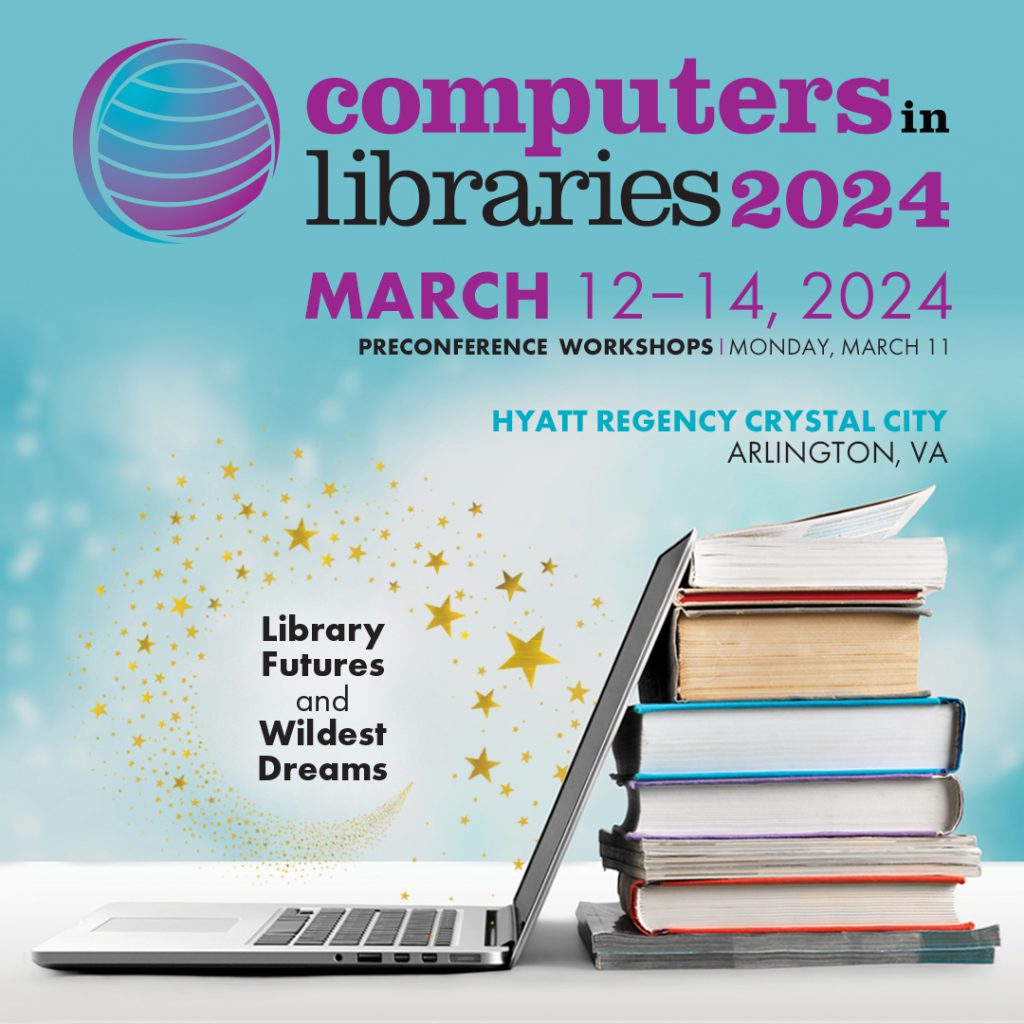
Friday Reads: Unbroken: My Fight for Survival, Hope and Justice for Indigenous Women and Girls by Angela Sterritt
Several years ago, I heard my dad scream in the middle of the night. It was such a foreign sound I thought it was leftover from the dream that had woken me up in the first place. I froze on high alert, listening. Nothing. I had nothing in my memory to compare the sound against, so it was easy to quietly dismiss the scream as a dream.
Months later, my dad and I were watching a movie about missing and murdered indigenous women and I found out my aunt had been murdered long before my life was even a possibility. He said the only time he ever screamed was that night when he woke up and saw her face next to his bed. The scream was real, and I did nothing. I didn’t know what to do with that information. I wanted to know more, but nobody ever speaks her name. The pain is still too great. There are probably others I don’t know about who were lost.
So I read Unbroken: My Fight for Survival, Hope, and Justice for Indigenous Women and Girls by Angela Sterritt, a Native journalist who grew up on the streets of Vancouver, Canada. I’ve read a lot on this topic. The book is part memoir and part investigative journalism as Sterritt blends together her own story of survival with the stories of those who were lost along the Highway of Tears in British Columbia. This is a stretch of highway where more than 40 Indigenous went missing or were found murdered. I thought it would be hard to read, but it wasn’t. Each story is filled with an equal amount of love and heartache. As I read, I wondered about my aunt’s story.
Sterritt tells these stories because “She could have been me”. I share the book because this problem is bigger than Canada. My aunt was found in Seattle. In the state of Washington alone, in a single year, over 5,000 Indigenous women and girls went missing. In smaller numbers, similar stories can be found in Alaska and other parts of the nation. As Sterritt shared her experience of walking the same streets as these lost women, I realized that I probably walked on the same street where my aunt lost her life. I’ve been to that area in Seattle several times, often at night. The statistics were mind-boggling. The stories struck me to the core.
As I read deeper, I remembered my mom telling me that I shouldn’t wear my beaded earrings, even though I love making them. They make me feel good. She wouldn’t say why, but she was disturbingly adamant that I shouldn’t wear them. At the time, I interpreted this as disrespecting a heritage that wasn’t her own. I wore them secretly in rebellious Native pride. Now I realize I was missing vital information. My aunt was murdered by a serial killer targeting Native women in Seattle. On the wrong streets, those earrings make me a target. I still make and wear my beaded earrings proudly, but when the shadows come out at night, I hide my heritage in a jewelry box in my purse. 5,000 women in a year. She could have been me.
I used to lay awake at night wondering if I would wake up in the dead of night and see her face. Would I recognize her? Did she spill over from a nightmare my dad was having? Would I share the same dream? I wondered if the desecration of murder was so powerful it could scream through the generations.
All I know is that this book was a journey for Sterritt. It was a journey for me. The stories of these women deserve to be told. Sterritt lived a hard life, but she emerged Unbroken. She seeks justice for the women who were lost along the Highway of Tears. She uncovers unbelievable acts of racism and unfounded hatred for Indigenous people. She shows how law enforcement ignored the problem and more went missing. She refuses to allow the media or the public to turn a blind eye to difficult topics. She lived on the wrong end of justice for long enough to show she speaks the truth.
Most of all, she shows how Indigenous women can survive and thrive in life. This book may be hard for some to read, but knowledge is power. Now I know what my earrings really mean. It’s not fair or just, but I have the power to make myself a little bit safer. It did help in a gas station parking lot late one night. That night, I was white. The world should know that statistically, the world is more dangerous to Native women. Read and learn the root causes of these terrifying numbers, especially if you have a Native population. Help keep that population alive.
STERRITT, ANGELA. Unbroken: My Fight for Survival, Hope, and Justice for Indigenous Women and Girls. GREYSTONE BOOKS, 2024.
Pretty Sweet Tech: Holiday & Winter Tech Kit Activities
Most of you probably know we offer Tech Kits Through the Mail to school and public libraries in Nebraska. But did you know that many of those kits have really fun holiday and winter themed activities? Check out a kit and try one one or all of these activity ideas this winter:
- Dash & Dot Winter Activities (age 6+): Design your own winter parade floats and program them around a parade obstacle, record your own winter theme song, challenge your friends to a snowball fight, and more!
- Finch 2.0 Robot Winter (age 6+): Turn your robot into a snowplow, build a holiday parade and add a green screen backdrop if you’re feeling fancy, or create a fun winter window display.
- Hummingbird Bit Premium (age 8+): Take your winter window display up a notch, craft and program an interactive winter story scene, or add a moving background to your winter parade video!
- Ozobot Evo Robot (age 4+): Design a Winter Wonderland and challenge others to navigate your creation, create a fun snow maze, use the plow attachment to clean the streets, or use your imagination to visit Narnia!
- Micro:bit (age 8+): Make an LED snow globe animation using the built-in display, blow out an LED candle or program your micro:bit to let you know when the sun is finally out again.
Find a full list of kits, or check out a Tech Kit Through the Mail using this link. Here are the loan program details:
- Kits can be checked out for 30 days at a time.
- You can check out multiple kits at once.
- Kits are shipped to you for free, and use of the kits is free.
- You only pay return shipping. (Some library systems may help offset these costs. Ask your system director if this is an option near you.)
- Check out the Tech Kit Loan Policy for more details.
I hope you have some winter wonderland fun with the Tech Kits Through the Mail!
Posted in Pretty Sweet Tech, Programming, Technology, Youth Services
Tagged Pretty Sweet Tech, stem, Tech Kits, Tech Kits Through the Mail
Leave a comment
Pretty Sweet Tech: Prairie STEM Library Pack Raffle!
The Nebraska Library Commission partnered with Prairie STEM to raffle off 42 STEM Library Packs! Each Library Pack comes with 12 individual kits that have instructions, career exploration information, and all the materials you need for assembly. Some of the design-related activities can be enhanced by items you have laying around the library.
About Prairie STEM
Prairie STEM is an Omaha-based nonprofit that offers STEM kits, educator training, and outreach programs in the Omaha area and beyond. They’ve partnered with various schools, libraries and educational institutions across the state, including virtual reality, drone, and smart garden programs.
Need Kits Right Away?
Through this partnership, you also have the option to purchase kits directly from Prairie STEM. You can get Classroom Packs of 12 or 24 of any or all of these types of kits:
- Cell Building Innovation
- Environmental Challenge
- Pendulum Painting
- Toothpaste Challenge
- Blood Model Innovation
- Design a Glider Innovation
- Quick Escape Challenge
Purchase kits directly at this link: https://stem-kits-nebraska-library-commission.cheddarup.com
Feel free to contact Prairie STEM to ask about partnering on any programming, custom kits, or educator/ facilitator training in your community.
Enter the Raffle!
Fill out this quick form to enter the raffle and be 1 of 42 libraries to win a STEM Pack! All the details are in the flyer below:

Friday Reads: For the Love of Cities, revisited by Peter Kageyama
A lot of you know that I’m not from Nebraska. I was born near Milwaukee, WI and lived there until I went to college in Minnesota. Over the years I’ve visited a lot of places too. Everywhere I go, I talk to people and get a feel for the place. I was in Tokyo, Japan most recently, so I’ll use that as an example. As I walked the streets of this foreign land, I had to remember that most people in the city were just home. Bear in mind that I don’t speak Japanese very well, but you can still tell who’s happy where they are, and who is crawling out of their skin waiting for a chance to leave.
That’s what For the Love of Cities: revisited by Peter Kageyama is all about. What does it take to make people fall in love with their city? Why do people choose some cities over others? Whenever I visit a new place, I can instinctively tell whether or not I could live there. I never really considered any actual criteria for the decision until I read this book. I just knew. Now I see greenery, coffee shops, places to relax and connect with people, clean streets, and plenty of shops and art embedded into the fiber of the community. I learned how to really look at a city.
My academic days still make me refer to authors by their last name. But this book makes people feel like family. So I’ll call him Peter. I don’t think he’ll mind, and I’ll also never meet him to find out. Peter digs into how cities come to be, and the many variables that force change over time. I also watched the author talk Peter did with Heritage Village. It’s free on YouTube if you want to check it out. That video adds visuals to his stories about how history shaped cities like Chicago, Detroit and many others. Sometimes dark parts of history like racial segregation and hate shape city lines that must be repaired over time for the city to adapt and thrive in the future.
When I visit other cities I usually dress to blend in. Just another Midwesterner in a t-shirt and leggings. In Japan I didn’t even try. Pretty sure I was the only curly-headed Native American in the whole country, so I wore bright colors or coffee t-shirts and capris everyday. My body type was never going to fit into such a petite country anyway. Even though their waffles are surprisingly good. I digress. Japan was awesome.
If you didn’t factor in the language barrier and distance from everything and everyone I know, I would actually live there. I walked the streets in my deeply American sandals and pondered how cities draw people in to live and work in a new land. What drew me to Lincoln, NE? What made me stay? The people? The place? The job? A little bit of all the above? I have new answers now.
Read this book if you want to look at your city differently. It’s a book full of stories and observations about little things that blend into the background of the place you’ve lived for years. When you’re done, take a walk around your city. Town. Wherever you call home. Try it with any town. Ask yourself why people choose this place? Why do people stay? If people are leaving, what could change to turn the tides? Peter will help you explore old places with fresh eyes. Just give it a try.
Pretty Sweet Tech: CyberPatriot’s National Youth Cyber Defense Competition
Cybersecurity is one of the top growing tech careers in the nation. The Air Force Association started their CyberPatriot’s National Youth Cyber Defense Competition to help middle and high school students explore cybersecurity careers by taking on the role of a cybersecurity systems administrator, working to prevent and address cyber threats to a small business. CyberPatriots is now the world’s largest cybersecurity competition!
Eligibility: The competition is open to all schools and approved youth organizations, including Boys & Girl Scout troops, STEM groups, libraries, and homeschool groups. School and public libraries are encouraged to apply!
Learn more about the competition structure, team member requirements, costs, and tech requirements on the CyberPatriot website.
Registration is due by October 3, 2023 so start planning now!
While you’re on the site, check out the Air Force’s other cybersecurity resources for senior citizens:
- CyberGenerations: This pre-packaged program is designed to introduce senior citizens to cybersecurity basics, password management, common internet threats, scams and fraud, and social media safety. CyberGenerations offers a Self-Paced Guide, and Workshop Resources to help facilitate virtual or in-person workshops.
- Tech Caregiver: This training course with resources and guides certifies trainers to assist senior citizens to safely operate online. This is a good course to get comfortable facilitating CyberGenerations workshops in your community.
Posted in Education & Training, General, Pretty Sweet Tech, Programming, Technology
Tagged Pretty Sweet Tech, prettysweettech, Programming, stem, technology
1 Comment
Grant Opportunity: High School Drone Program
If you work with high school students in your library, or know a high school in need of a drone program, check out this FAA Aircraft Pilots Workforce Development Grant Program.
The FAA is awarding up to $500,000 to multiple applicants for a total of $4,500,000 in an effort to attract future aircraft pilots, aerospace engineers, or unmanned aircraft systems operators (drone operators) in the U.S. Starting a drone pilot training program in your school or library is a great way to attract future aviation professionals!The grant application is due August 16, 2023, so think fast! Feel free to check out these drone training resources for high school age students as inspiration for your grant writing:
- Skyop: Drone Training Programs for High Schools. Reach out to them for a consultation and customized program. This program can actually result in pilot certification.
- Droneblocks Curriculum for DJI Tello Drones
- CoDroneEDU Classroom Packs from Robolink
You can also reach out to local community colleges and universities to get the most up to date drone-related curriculum, or more local resource and program referrals. I’ll stop droning on now. Happy applying!

Posted in Education & Training, General, Grants, Pretty Sweet Tech
Leave a comment
#FridayReads Romeo & Juliet… with a Robot?
Shakespeare has a robot now. She’s yellow, humanoid and kind of sassy as she introduces each scene in this revamped Romeo and Juliet.
Did I mention she actually walks around the page and talks to Shakespeare on occasion? I wish I could say you will open Living Popup’s magical book and she just appears like a Star Wars-esque hologram on the page, but we’re just not there yet. This book is Augmented Reality (AR) Enabled, which means you download an app on your phone, point your camera at illustrations in the book, and the scene unfolds on your screen.I had so much fun with this book at the ALA conference that I got a little giddy and bought it on the spot. I’m a big kid now, but Living Popups actually made me like Shakespeare. If I had had this version as a teenager, my eyes wouldn’t have glazed over while being forced to analyze every turn of phrase back in the day. But fear not! The original Shakespearean text remains untouched, just formatted more like a modern movie script than the version with tiny font that was inflicted upon me. I’m replacing my obligatory Shakespeare collection with the AR version immediately.
The AR illustrations appear at the start of every act and scene. We all know the themes, character development, and lessons learned from Shakespeare are timeless. The robot is another fun way to bridge the gap from the old, unfamiliar language to the new world. Unlike my Shakespeare professor in college who seemed determined to make me memorize passages, the AR robot jumps in to explain the setting, little parts of history, and important plot points in a way that actually makes sense. And doesn’t make me want to take a nap.
It was also fun to see a robot have a conversation with Shakespeare to ask him what in the world he was thinking, writing a play about two dying teenagers. I paraphrase, but you get the idea. Robot gets real. If you want to make Shakespeare interesting, but still stay true to the original text, the robot can help. It’s better than sitting down and watching the Leo DiCaprio movie again. Though that is an undeniable classic. I own the soundtrack. It couldn’t hurt to do both? I digress.
Living Popups makes a little quartet of robot-ified Shakespeare books, some Boxcar Children books, Animal Farm, Legend of Sleepy Hollow, and a growing collection of books for Elementary to Middle school students. The AR scenes are actually good, with voice acting and everything.
Give Living Popups a try if you want to see the future of books.
Pretty Sweet Tech: Free AI Video Generator Tool
Do you want to play with AI generated videos in your library? I just stumbled across a website called Kapwing that will allow you to generate short, watermarked videos for free. They also have a reasonably-priced Pro plan if you’re looking for a video editor with AI capabilities for your library, or want to offer this cool new service to patrons.
If you’re new to AI generated videos, this service allows you to enter a brief description, and Kapwing will automatically generate text, music, and video clips that match your topic. Adjust phrasing or trade out images to get an end result that works for you! You can also generate an AI Video Script using a similar process. Kapwing uses the ever-popular ChatGPT to generate the scripts.
Example Video
I tried out both the AI Video Generator and the AI Video Script Generator and they are both alarmingly good. Here’s the video Kapwing generated when I entered “libraries supporting job seekers searching for meaningful work”. I didn’t do any extra editing. This is the video as is:
Tutorial Instructions
Want to try it yourself? Use these instructions:
- Go to https://www.kapwing.com/ai
- Choose AI Video Generator. Click Create a Video with AI.
- Look for “Create a Video About”. Click in the text box and type in a description. (ex. create a video about frogs traveling to Paris who are deathly afraid of French chefs)
- Press enter to generate video.
- Choose the video size. 16:9 aspect ratio is recommended for YouTube and standard screens.
- Choose the text style. Click Generate Video.
- Login or create a free Kapwing account. Click “Generate Video” again after logging in.
- Wait for video to load. The slower the internet, the longer it takes, as usual!
- Adjust images, text, and settings as needed.
- Click “Export Project” (upper right corner)
- Choose MP4 for video. 720p resolution is the highest possible for free version.
- Click “Export as MP4”. File may take a while to load.
- Click “Download” to save on your computer or flash drive.
Note: The free version only lets you store 3 videos at a time. To create more, download your videos, then delete them from your Kapwing account. Or just delete them if you don’t need an archive.
If you want longer videos, more videos, higher resolution, or no watermarks, you will need the paid version of Kapwing. It’s about $16/ month/ user (paid yearly), so if you generate a lot of videos for your library, it might be worth it! You also have the option to use Kapwing as a regular video editor, without AI. There are plenty of tutorials!
The AI Script Generator is freakishly accurate too if you want to speed up the process of making videos for your library! Have fun playing with AI!!
Robot Warning: Kamigami Robots Discontinued
I’ve gotten a lot of requests for robot recommendations, many specifically about those cute Kamigami robots shaped like bugs and dinosaurs. While I do love the Kamigami robots in general, the manufacturer has discontinued the product. You can no longer download the app on Android, and it only works on older iOS devices that have not been updated recently. It is still available for download on iOS, but only works reliably on older phones.
Amazon lists all Kamigami robots as “discontinued by manufacturer”, but not all resellers post this same warning. I only found out the app is no longer supported by cross-referencing the comments across several Amazon listings. Kamigami was picked up by Mattel a few years ago, and it appears that Mattel is no longer keeping our favorite little bugs alive.
Long story short, buy Kamigami robots at your own risk. They are adorable, but all good things come to an end. I will miss those cute little bugs. If you already have one, program it for as long as you can. This post is going to get me a little misty-eyed! Another good gadget bit the dust…



